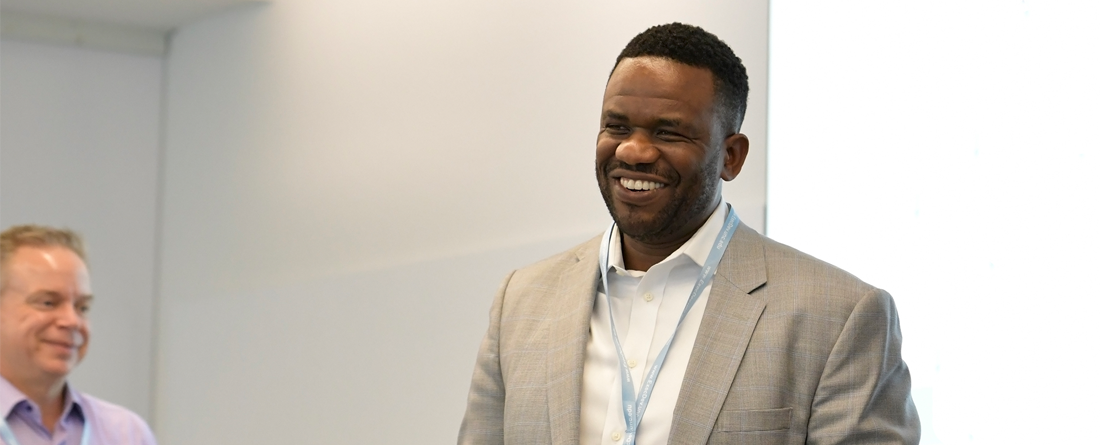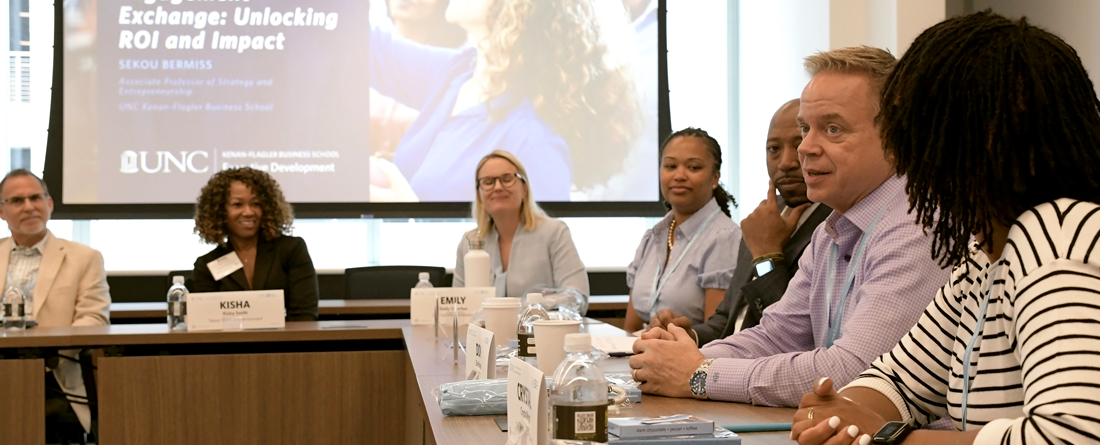This article is part six of our six-part series, Leading in the Middle: 2024, by UNC Executive Development Senior Associate Dean Dave Hofmann. For more insights on how to lead effectively from any position in an organization, download Dave’s ebook, Leading in the Middle: 2024.
A few years ago, I was asked to facilitate a leadership and board retreat for a local organization. I met with the organizers several times to learn their goals for the session, what success would look like, and the key issues confronting the organization.
Along the way, I learned that one of the organizers was planning to send three (somewhat lengthy) pre-read articles. The goal of these pre-reads was to interject outside, external perspectives into the meeting and encourage board members and key leaders to think differently about how the organization could achieve its mission.
As the organizers talked about these pre-reads, I had a few thoughts. First, all the individuals attending the retreat were extremely busy, so I wondered if they would have the time (or take the time) to read and digest the multiple pre-reads. Second, I thought about our limited time together: 8:00 am through lunchtime. How much time would be devoted to discussing the readings versus “jumping in” and getting to work on the short- to mid-term strategy and key objectives? In other words, how much time would be dedicated to the retreat’s ultimate goal of determining what the organization was going to do?
As I listened, I wondered if there might be a better way…and then the idea of “Four 1s” popped into my head. What if, instead of three pre-reads, the assignment was this: Read 1 article and come prepared in 1 minute to share 1 insight and 1 implication?
Four 1s: 1 Article, 1 Minute, 1 Insight, 1 Implication
I shared my thoughts and how this approach – within less than 30 minutes – would give us a “framing” of the rest of the day. We agreed to give it a try.
After a brief welcome, we started the session. I set a timer, and we went person by person. Everyone was allotted one minute to deliver one insight from their reading, and then share one implication of this insight for the organization. Discussion was limited – only quick clarifying questions were allowed before the focus moved to the next person.
We had 12 individuals at the retreat. Within 20 minutes (adding time for me to write on the flip chart, ask clarifying questions, and move to the next person), every person voiced one insight and one implication for the organization. We then collectively identified key themes from these insights and implications and used them to inform the conversations throughout the rest of the day.

Using the Four 1s to Infuse Innovation into Your Team
Innovation is the lifeblood of any successful team, and innovation is often driven by infusing new ideas, new thinking, or new perspectives into the team. The Four 1s is a simple, efficient, and powerful way to do this. Here’s how:
1. Article/Podcast
Team members review one piece of content, such as an industry report, academic paper, article, or podcast. The piece could be the same for the entire team, or individuals might each choose their own. Because the purpose of this exercise is to infuse outside thinking into the team, the piece should be about a different industry, emerging technology, societal or cultural changes, or geopolitical dynamics. As the team leader, you will have to decide how much direction you want to give depending on your unique situation. Keep in mind, however, that it matters less what individuals read or listen to, and more about encouraging them to expand their thinking about the team’s work.
2. Insight
Before the meeting, ask everyone to identify one insight from their article or podcast. What did they find new, surprising, or thought-provoking? The focus should be on extracting a key insight, not summarizing the article (which they will not have time to do anyway, hence the 1-minute timer). The insights should remain focused on how the team needs to start thinking differently.
3. Implication
Next, ask individuals to consider one implication for the team in light of this insight. How might this insight influence the team’s work, strategy, or processes, or how might it disrupt the industry? Rather than merely prompting the team to think differently, the implication should direct them to focus on what the team needs to start doing differently.
4. One Minute
During the meeting, allocate one minute for each person to share their insight and its implications. Telling everyone in advance that they will have just one minute and setting a timer to keep everyone on pace will force individuals to focus on the essentials: identifying one insight and one implication.
After a short round-robin on insights and implications, the team can discuss the most interesting insights and identify one or two implications that the team needs to follow up on and advance (with an owner, accountabilities, and so forth).
Moving Forward
So, maybe once a quarter, experiment with the Four 1s. The goal is to invite diverse perspectives, external insights, and continuous learning, all while encouraging your team to engage in the process and own the outcomes.
This simple strategy of “1 Article, 1 Minute, 1 Insight, 1 Implication” can ensure that your team is constantly learning and linking these insights to action. By fostering a culture of continuous learning and diverse thinking, you can keep your team agile and looking to create additional value in active and ongoing ways.
To read more from Dave Hofmann, visit his Substack and subscribe.






